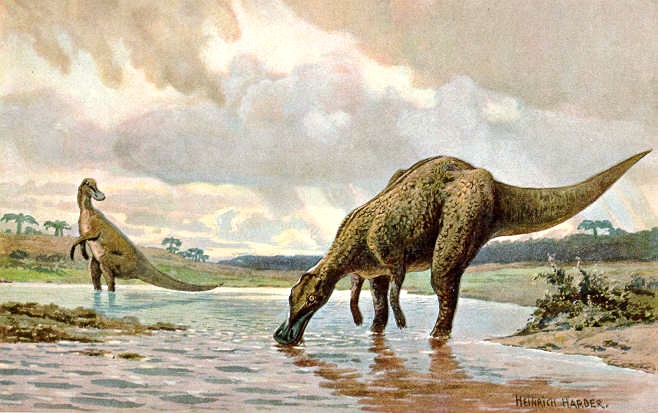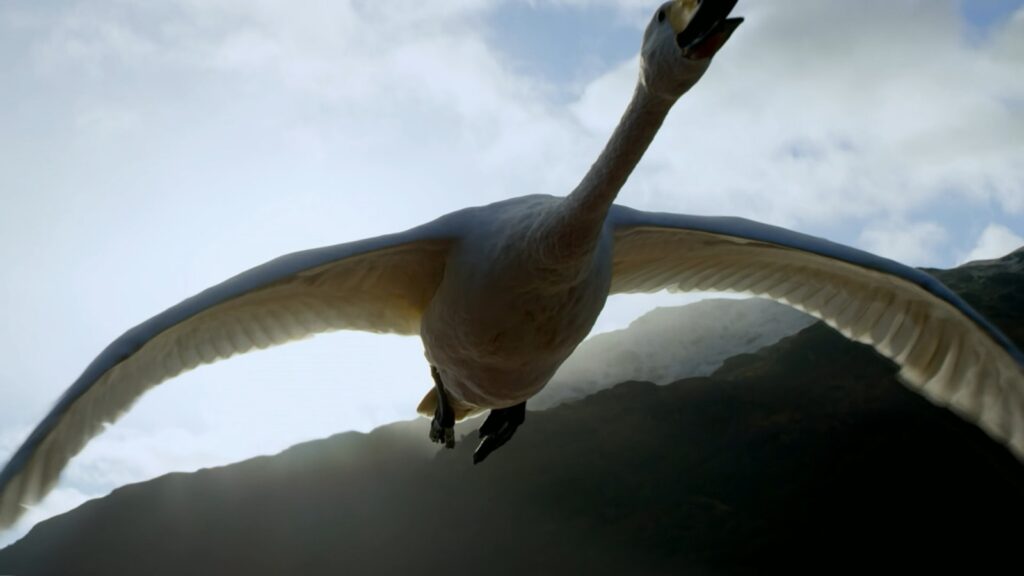When we think of dinosaur battles, our minds often race to the ferocious Tyrannosaurus rex or the intimidating Velociraptor. However, the plant-eating giants of the Cretaceous period engaged in their remarkable evolutionary competition. Hadrosaurus and Iguanodon, two prominent ornithopod dinosaurs, represent fascinating case studies in convergent and divergent evolution among herbivorous dinosaurs. Though separated by geography and millions of years, these magnificent creatures shared similar ecological niches while developing unique adaptations. This comparative examination explores their anatomy, habitats, behaviors, and evolutionary significance, offering insights into how these gentle giants dominated prehistoric landscapes across different continents.
Meet the Contenders: An Evolutionary Overview

Hadrosaurus and Iguanodon represent two of the most significant ornithopod dinosaur genera that ever walked the Earth, though they lived millions of years apart. Iguanodon roamed what is now Europe during the Early Cretaceous period (approximately 125-126 million years ago), while Hadrosaurus inhabited North America during the Late Cretaceous (approximately 80-78 million years ago). Both belonged to the larger dinosaur group called Ornithischia, characterized by bird-like hip structures. Iguanodon holds particular historical significance as one of the first dinosaurs ever scientifically described, with fossils discovered in the 1820s in England, helping establish the concept of prehistoric extinct reptiles. Hadrosaurus, discovered later in New Jersey in 1858, became the first relatively complete dinosaur skeleton found in North America, revolutionizing public understanding of these ancient creatures.
Size and Physical Appearance Comparison
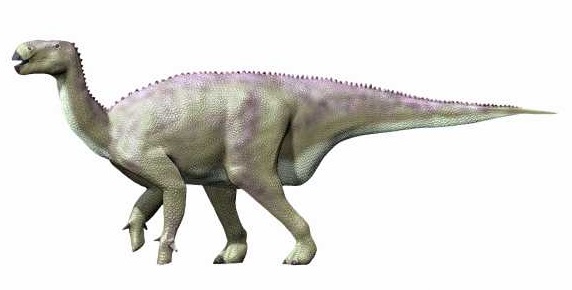
Iguanodon typically measured about 30 feet (9 meters) in length and stood roughly 16 feet (5 meters) tall, weighing an estimated 4-5 tons. Hadrosaurus was slightly smaller, reaching approximately 25 feet (7.5 meters) in length and weighing around 3-4 tons. Both dinosaurs displayed the characteristic ornithopod posture, capable of moving on all fours but primarily bipedal when running. Their bodies featured heavy torsos balanced by long, muscular tails that served as counterweights and stabilizers during movement. While Iguanodon possessed a more robust build with thicker limbs, Hadrosaurus exhibited a somewhat sleeker profile. The most striking visual difference appeared in their heads—Iguanodon had a more elongated snout with a beak-like structure, while Hadrosaurus developed the distinctive duck-billed appearance that would become characteristic of its hadrosaur relatives.
The Distinctive Hands: Thumbspikes vs. Flexibility
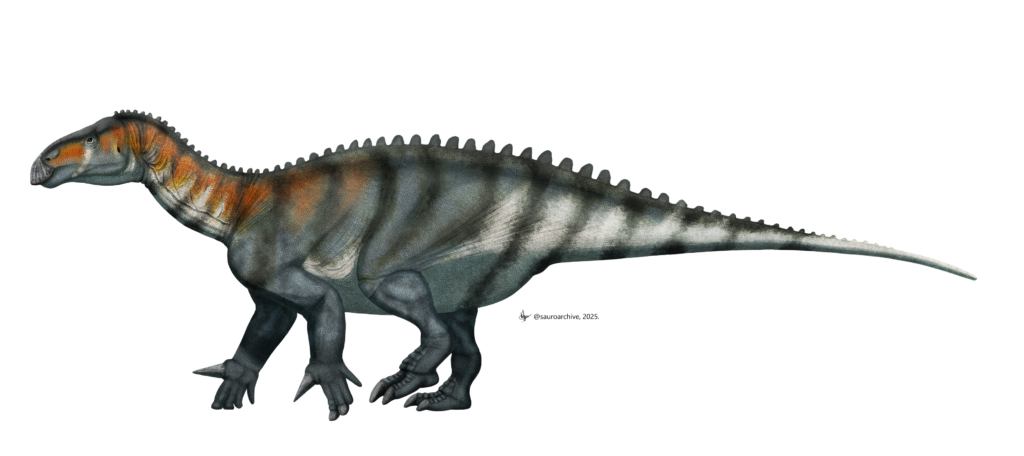
Perhaps the most famous anatomical feature of Iguanodon was its specialized hands, which featured a remarkable conical spike where the thumb would be. These thumb spikes, which could grow up to 6 inches (15 cm) long, were likely used for defense against predators or possibly for breaking open tough plant materials. The other fingers on Iguanodon’s hands were relatively stiff and appeared to function as weight-bearing support during quadrupedal locomotion. Hadrosaurus, by contrast, had more flexible hands lacking the distinctive thumb spike, with digits that could potentially grasp vegetation more effectively. This difference represents a significant evolutionary divergence between these herbivores, suggesting they employed different feeding strategies and defensive mechanisms. The hand structure of these dinosaurs provides paleontologists with valuable insights into their respective lifestyles and evolutionary adaptations to their environments.
Feeding Adaptations and Dietary Preferences

Both dinosaurs were equipped with specialized dental batteries particularly suited for processing tough plant material, but their approaches to herbivory showed subtle yet important differences. Iguanodon possessed relatively simple leaf-shaped teeth arranged in rows that formed effective grinding surfaces, allowing it to process fibrous vegetation such as cycads, conifers, and early flowering plants prevalent in the Early Cretaceous. Hadrosaurus, evolving later, developed more complex dental arrangements with hundreds of tightly packed teeth that formed highly efficient grinding surfaces, optimized for the diverse angiosperms (flowering plants) that had become dominant by the Late Cretaceous. This dental specialization gave Hadrosaurus an advantage in extracting more nutrients from plant material. Additionally, Hadrosaurus likely had more sophisticated chewing mechanisms, with a skull designed to allow slight movement during mastication, further enhancing its efficiency as a herbivore in increasingly competitive ecosystems.
Locomotion and Speed: Bipedal vs. Quadrupedal Movement
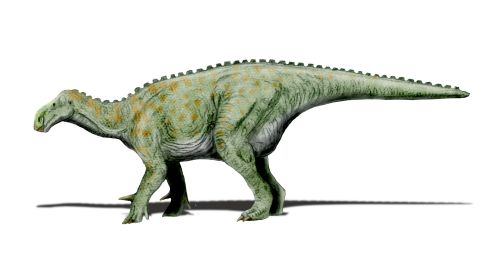
Both dinosaurs demonstrated remarkable locomotor flexibility, capable of shifting between bipedal and quadrupedal stances depending on their activities. When moving slowly or grazing, they likely adopted a four-legged position for stability, but when needing to move quickly to escape predators, they would rise onto their powerful hind limbs. Biomechanical studies suggest Iguanodon, with its more robust limb structure, could potentially reach speeds of 15-20 mph (24-32 km/h) during short bursts. Hadrosaurus, with slightly more gracile limbs, might have been marginally faster, potentially reaching speeds of up to 25 mph (40 km/h). The muscle attachment points on their fossilized bones indicate that both possessed powerful leg muscles necessary for both sustained walking and quick acceleration. Their versatile locomotion represents an evolutionary middle ground between the strictly bipedal, smaller ornithopods and the exclusively quadrupedal, larger ceratopsians and ankylosaurs, demonstrating the adaptability that contributed to their evolutionary success.
Habitat and Environmental Adaptations
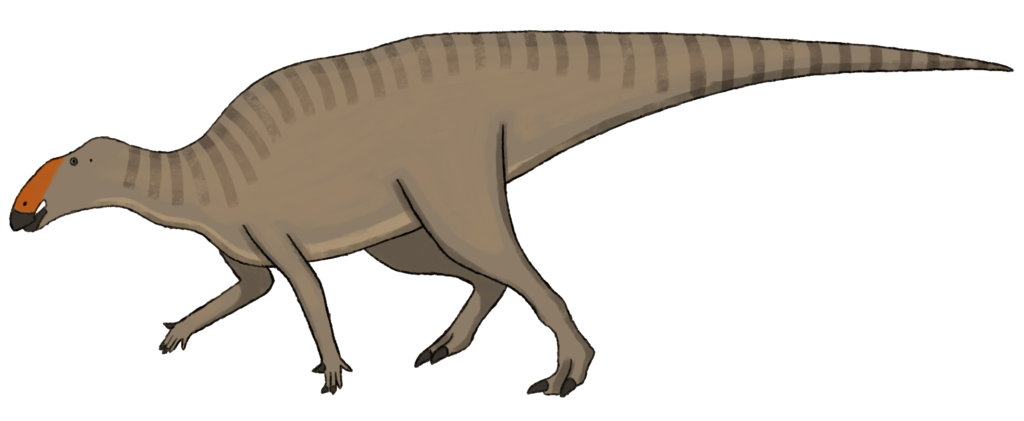
Iguanodon inhabited a world quite different from Hadrosaurus, living in what would become Europe during a period characterized by seasonal wetlands, conifer forests, and the emerging diversification of flowering plants. The climate was generally warm and humid, though subject to seasonal variations. Fossil evidence suggests Iguanodon was adaptable to various environments, including coastal plains and more inland regions. Hadrosaurus, evolving millions of years later in North America, thrived in coastal lowlands and swampy environments along what is now the eastern seaboard of the United States. Its habitat was dominated by diverse angiosperm forests and extensive wetlands. The anatomical differences between these dinosaurs reflect their adaptations to these distinct environments. s—Hadrosaurus’s more specialized dental structures evolved to process the greater variety of plant material available in the Late Cretaceous, while Iguanodon’s more generalized feeding apparatus suited the less diverse flora of the Early Cretaceous.
Social Behavior and Herd Dynamics
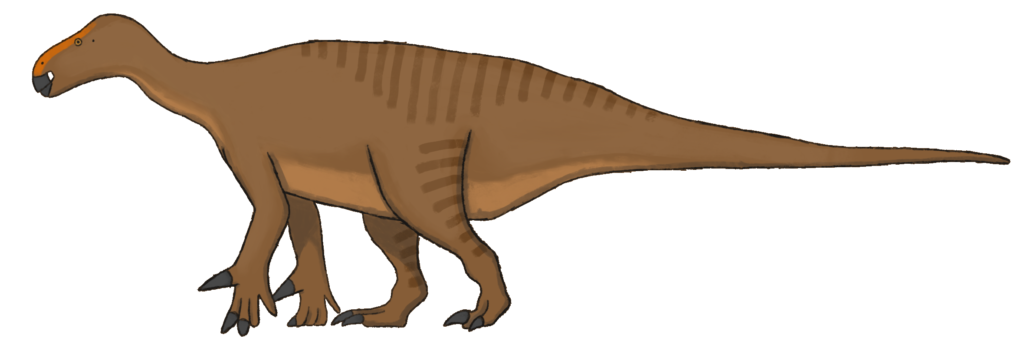
Fossil evidence strongly suggests both Iguanodon and Hadrosaurus were social animals that lived in herds, though the nature of these social structures likely differed. Multiple Iguanodon specimens discovered together at sites in Belgium and England indicate these dinosaurs traveled in groups, possibly including various age ranges. These findings suggest complex social dynamics potentially involving cooperative defense against predators and possibly coordinated seasonal migrations. Hadrosaurus, while less well-represented in mass fossil sites, likely exhibited similar herding behavior based on trackways and comparisons with related hadrosaurs, which are known from spectacular bone beds containing thousands of individuals. The evolution of herding behavior provided crucial protection against formidable predators like tyrannosaurs and allowed for more efficient exploitation of plant resources across changing landscapes. The social nature of these herbivores represents a significant evolutionary adaptation that contributed substantially to their success in Cretaceous ecosystems.
Reproductive Strategies and Growth Patterns
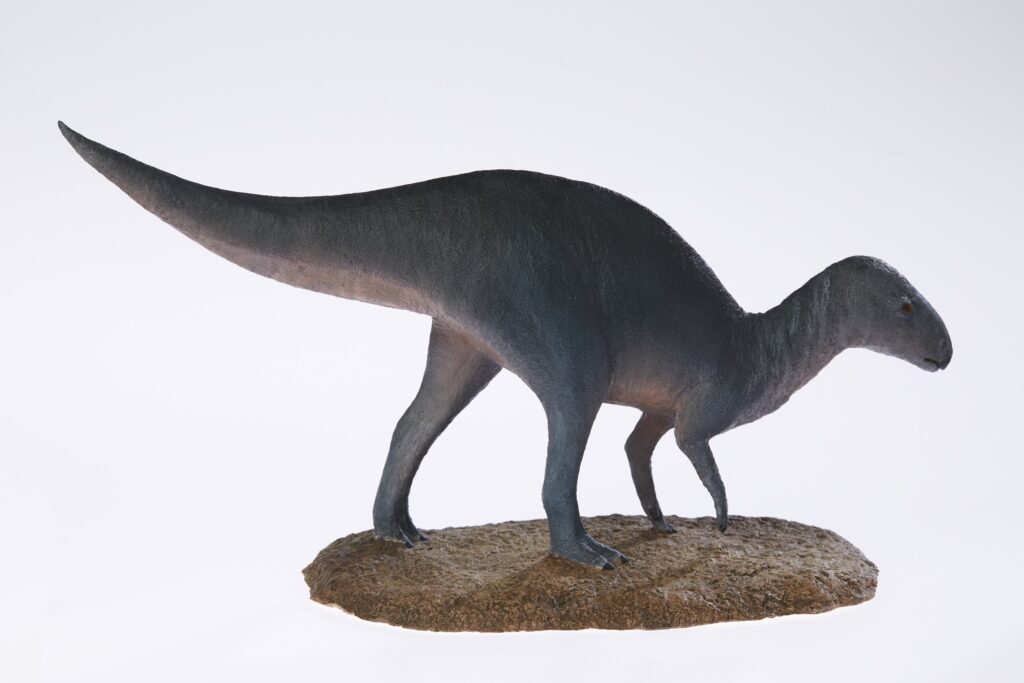
Both dinosaurs likely shared similar reproductive strategies, laying eggs in carefully prepared ground nests. Based on fossil evidence from related species, female Iguanodon and Hadrosaurus probably laid clutches of 20-30 eggs, arranged in circular or spiral patterns. After hatching, the young dinosaurs grew rapidly, with studies of bone histology suggesting they reached adult size within 8-10 years, remarkably fast for animals of their size. Growth ring analysis in fossilized bones indicates that Hadrosaurus may have grown slightly faster than Iguanodon, potentially reaching sexual maturity in 6-8 years compared to Iguanodon’s 8-10 years. This accelerated development could have given Hadrosaurus a competitive advantage in the more ecologically complex Late Cretaceous environments. The relatively rapid growth rates of both dinosaurs suggest significant parental investment in their young, though the degree of post-hatching parental care remains a subject of ongoing scientific investigation.
Predator Defense Mechanisms

Both herbivores faced formidable predators in their respective environments and evolved complementary defensive strategies. Iguanodon’s primary defensive weapon was undoubtedly its thumb spike, a formidable dagger-like structure that could deliver devastating blows to attacking predators. Combined with its powerful hind legs capable of delivering forceful kicks, Iguanodon possessed significant individual defensive capabilities. Hadrosaurus, lacking the thumb spike, likely relied more heavily on herding behavior for protection, with safety in numbers serving as its primary defensive strategy. Both dinosaurs benefited from their substantial size, which would have deterred all but the largest predators from attacking adult specimens. Their bipedal running ability provided an effective escape mechanism, while their attentive parental behavior and potential herding structures likely included protective formations around vulnerable juveniles. These complementary approaches to predator defense highlight the different evolutionary paths these similar herbivores took in response to their respective ecological challenges.
Evolutionary Significance and Legacy
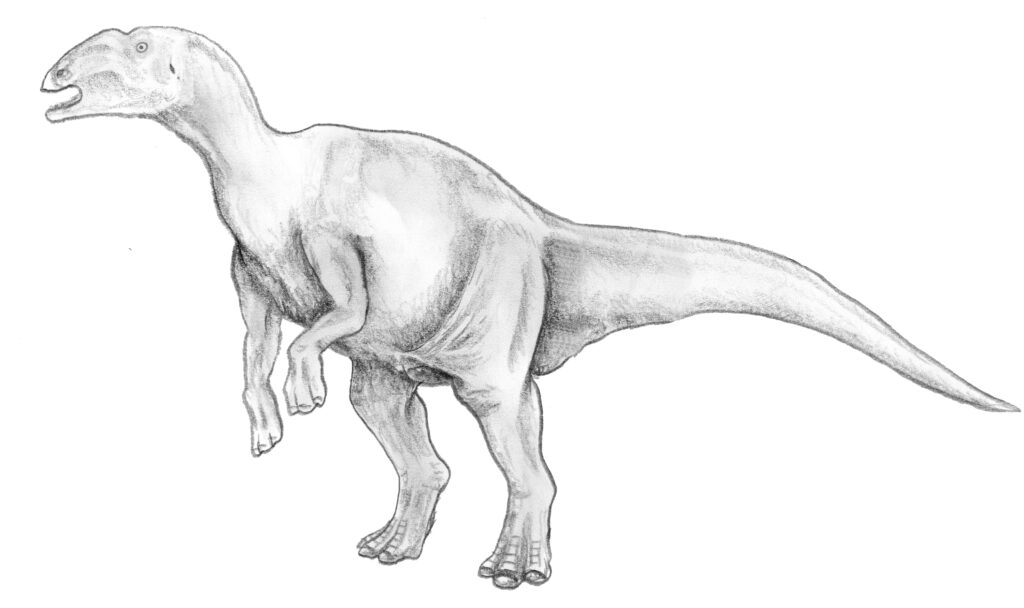
Iguanodon represents a crucial transitional form in ornithopod evolution, bridging the gap between earlier small bipedal dinosaurs and the more specialized hadrosaurs that would later dominate herbivore niches. Its successful adaptations—including the thumb spike, effective dental batteries, and flexible locomotion—established evolutionary patterns that would persist and diversify among later ornithopods. Hadrosaurus, emerging later in the dinosaur timeline, exemplifies the refinement of these adaptations, with its more specialized feeding apparatus and distinctive duck-billed skull representing evolutionary responses to increasingly competitive herbivore ecosystems. The evolutionary legacy of these dinosaurs extends beyond their direct descendants, as they established ecological roles and adaptive strategies that influenced entire Cretaceous food webs. Their fossils provide invaluable windows into different stages of ornithopod evolution, demonstrating how similar ecological pressures can produce convergent adaptations across millions of years and continental divides.
Historical Importance in Paleontology
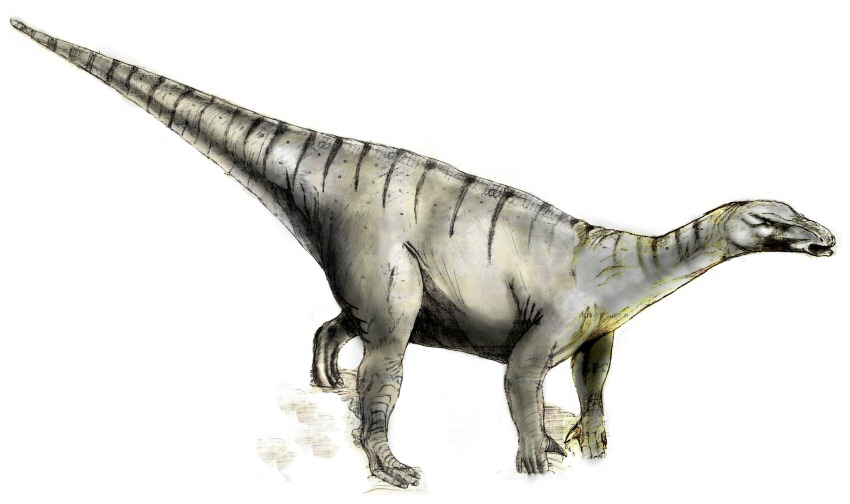
Both dinosaurs hold special places in the history of paleontological discovery and public understanding of prehistoric life. Iguanodon, first described by Gideon Mantell in 1825, was among the first dinosaurs ever scientifically recognized, fundamentally changing scientific understanding of Earth’s history. Its early reconstruction as a quadrupedal, rhinoceros-like creature with a nose horn (actually the misplaced thumb spike) illustrates the evolving nature of paleontological interpretation. Hadrosaurus, discovered by William Parker Foulke in Haddonfield, New Jersey, in 1858, made history as the first relatively complete dinosaur skeleton found in North America. When mounted at the Philadelphia Academy of Natural Sciences in 1868, it became the world’s first dinosaur skeleton displayed in a standing position, revolutionizing public perception of these animals as dynamic, bipedal creatures rather than lumbering reptiles. These scientific milestones associated with both dinosaurs have influenced generations of paleontologists and helped shape our modern understanding of dinosaur biology and behavior.
Modern Scientific Understanding
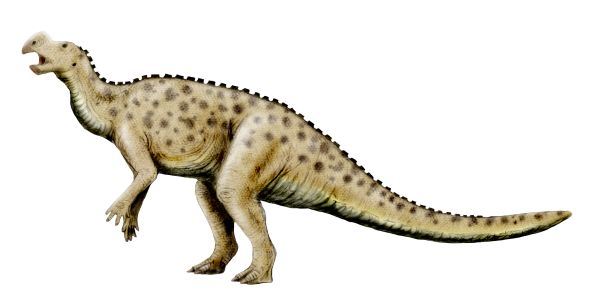
Contemporary paleontological research continues to refine our understanding of dinosaurs through advanced analytical techniques and new fossil discoveries. Modern biomechanical studies using computer modeling have provided deeper insights into how these dinosaurs moved, suggesting both could switch efficiently between bipedal and quadrupedal locomotion depending on speed and activity. Microscopic analysis of tooth wear patterns has revealed subtle differences in feeding mechanisms, with Hadrosaurus showing evidence of more complex jaw movements than Iguanodon. Paleohistology—the study of fossilized bone microstructure—has revealed growth patterns suggesting both dinosaurs experienced rapid juvenile growth followed by slower growth as they approached adulthood. Advances in paleoecology have helped reconstruct the complex ecosystems these dinosaurs inhabited, from the warm, seasonal environments of Early Cretaceous Europe to the diverse coastal forests of Late Cretaceous North America. These ongoing scientific investigations continue to deepen our appreciation for the remarkable evolutionary adaptations that allowed these magnificent herbivores to thrive in their respective prehistoric worlds.
The Verdict: Evolutionary Champions in Their Own Right
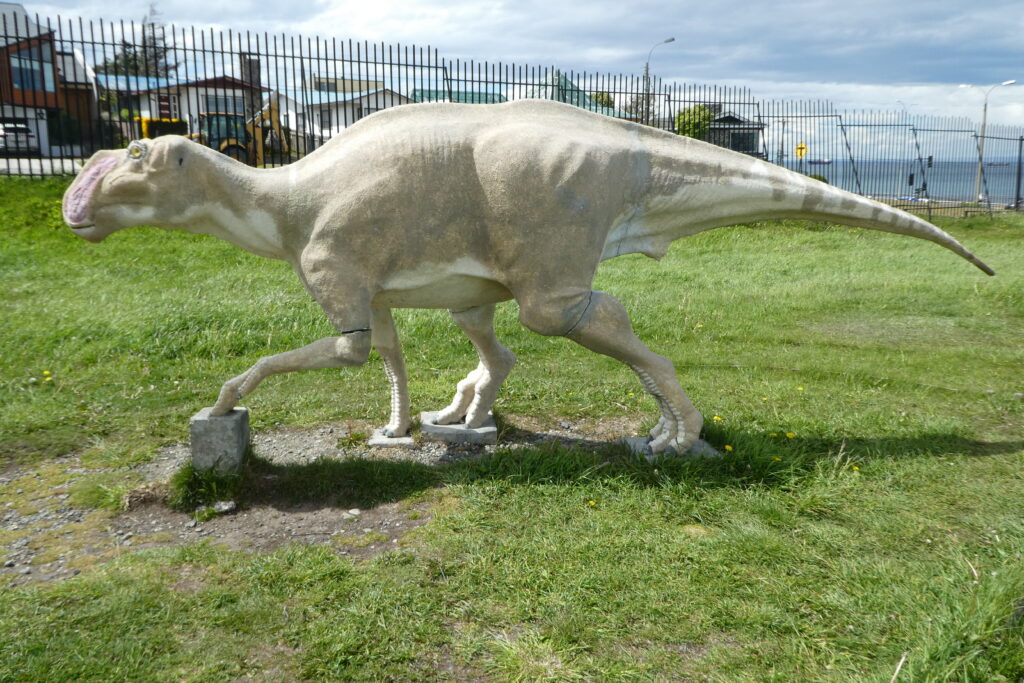
Rather than declaring one dinosaur “superior” to the other, modern paleontological perspective recognizes both Iguanodon and Hadrosaurus as supremely successful in their respective temporal and geographic contexts. Iguanodon’s versatile adaptations allowed it to thrive for millions of years across Early Cretaceous Europe, establishing foundational evolutionary patterns that would influence later ornithopods. Hadrosaurus, evolving later within the specialized hadrosaur lineage, represented a refined version of the ornithopod body plan, with adaptations specifically suited to the complex plant communities of Late Cretaceous North America. Both demonstrated remarkable evolutionary responses to similar ecological challenges—efficient herbivory, predator avoidance, and reproductive success—while developing distinct anatomical solutions. The comparison between these magnificent dinosaurs ultimately reveals not competition but complementary evolutionary success stories, with each representing perfect adaptations to its specific environmental circumstances. Their fossil legacy continues to enhance our understanding of how evolution shapes magnificent creatures across vast periods and geography.
Conclusion
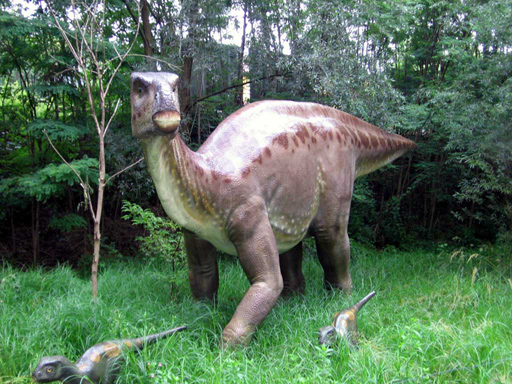
In conclusion, the comparison between Hadrosaurus and Iguanodon offers fascinating insights into parallel evolutionary pathways among herbivorous dinosaurs. Though separated by millions of years and continental divides, these remarkable creatures developed similar solutions to the challenges of herbivory while maintaining distinctive anatomical specializations. From Iguanodon’s versatile thumb spikes to Hadrosaurus’s efficient dental batteries, each represents a masterpiece of evolutionary adaptation to Cretaceous ecosystems. Their stories remind us that evolution produces not winners and losers but rather diverse solutions perfectly suited to specific times and places. As paleontological techniques continue to advance, these magnificent herbivores will undoubtedly reveal even more secrets about life in the age of dinosaurs, further enriching our understanding of Earth’s extraordinary prehistoric past.

